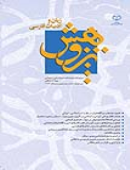بازتاب تفكّر يوناني، ايراني و اسلامي در تأويل سهروردي از داستان رستم و اسفنديار
محورهای موضوعی : Research in Iranian classical literature
1 -
کلید واژه: نقد اسطوره شناختي داستان رستم و اسفنديار رساﺋل فارسي شيخ اشراق,
چکیده مقاله :
تفسير و تأويل اساطير در ادبيات كلاسيك ايران به دلايل زيادي از جمله كفرآميز پنداري آنها چندان مورد توجه قرار نگرفته است. در كنار تأويلات اندك و از هم گسيخته سنايي، شاعر قرن پنجم، شيخ اشراق، عارف و فيلسوف بزرگ قرن ششم يكي از كساني است كه با جدّيت تمام در پي تفسير و تأويل اساطير ايران باستان برآمده است. شيخ اشراق با اين تأويلات ميخواهد پيوندي عميق ميان سه فرهنگ مجزّا از هم؛ يعني فرهنگ اسلامي، حكمت ايران باستان و فلسفه يونان برقرار كند. زيرا وي از يك سو به عنوان مسلمان معتقد، با فرهنگ اسلامي و عناصر فرهنگي آن از جمله تصوّف به خوبي آشناست و از طرف ديگر به عنوان ايراني نژاده و اصيل، ميراثدار تمدن ايران قبل از اسلام است و نيز نميتواند به فلسفه يونان كه محصول با ارزش خرد و عقلانيت بشري است، بياعتنا باشد. سهروردي با ژرفبيني خاص خود پي برده است كلّيت سه فرهنگ به ظاهر مخالف هم نه تنها تضادّي با يكديگر ندارند، بلكه در صورت اتحاد و سازش ميان آنها، مي توان به تجربه اي گرانسنگ براي هدايت و رشد بشريت دست يافت. در اين مقاله سعي شده است تلاش و كوشش اين نابغه بزرگ در ايجاد پيوند و سازش جريانهاي تفكر بشري كه در تأويل وي از داستان اسطورهاي رستم و اسفنديار منعكس شده است، تبيين و دلايل چنين تأويلي ضمن نشان دادن عناصر فرهنگهاي مذكور باز نموده شود. پيداست كه در دوره سهروردي اين داستان و ديگر داستانهاي شاهنامه به اندازهاي مشهور شده بودند كه به راحتي و جز براي اغراض ويژهاي در هم ريختن ساختمان آنها سهل و آسان نبود. اما شيخ اشراق با توجه به ذهنيت خاص خود از عهده اين مهم بر آمده و اين داستان را ساختارشكني كرده است تا بتواند نظرات اشراقي خود را در لابه لاي آن باز گويد.
Although, interpretation of the anecdotes has thousands – year history in the west and it is now considerable in the west literature, it has not been paid so much attention in Iran classic literature due to some reasons including their being profane. Along with the scattered and little interpretation by Sanaie, the poet of the 5th century, Sheikh Eshragh, the mystic and philosopher of the 6th century is the last person interpreted and reflected upon the Iran ancient myths. He wants to make a concrete link between three separate dimensions of Islamic culture, Iranian ancient wisdom and Creek philosophy. For he, as a believer Muslim, is familiar with Islamic culture and its components including mysticism in one hand and he is the heritance to the pre-Islamic period as Iranian generated one on the other hand and so can not ignore the Creek philosophy as the result of human valuable reason and wisdom. Souhravardi, with his especial perceptivity, has found that the three mentioned apparently opposing cultures essence is the same and in case of their unification and harmony, Men can have a great experience in Human development and leadership. This article tries to show this great genius attempts for linking the Human thinking follows reflected in his interpretation from the Rustam and Esfandiar Story, revealing and the reasons for such interpretation while showing the elements of the cultures said above. It is clear that during Souhravardi day, this story and Shahname stories were famous in such a way that,deconstructing them was not an easy task except for some specified reasons but, Sheikh Eshragh could do so by his special thought background and broke the structure of this story aimed at finding his views within the layers of it.

